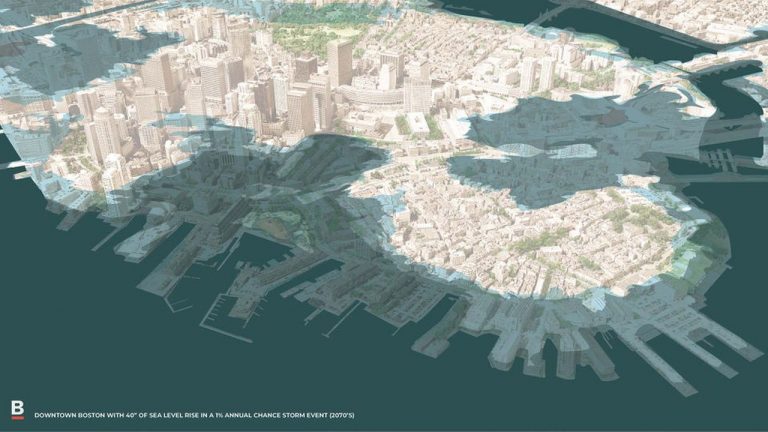Climate Change is Impacting Our Coasts
Higher sea levels, increased flooding during high tides and coastal storms, and changes in ocean currents and temperatures are only a few examples of the effects of our changing climate.
Coastal cities, where much of the global population resides, are at high risk for coastal flooding. The consequences of climate change will disproportionately impact environmental justice communities—those places where conditions such as household income and language spoken at home make them more vulnerable to environmental burdens. Coastal ecosystems—critical to the planet for their biodiversity, food security, recreation, and flood protection—are also experiencing changes.
Boston Harbor is a case in point: Climate Ready Boston, an initiative currently underway by the City of Boston, reports that relative sea level rise from the present to 2100 could be 2.4 feet to 7.4 feet. Average annual damages from storm generated coastal flooding could be as much as $1.39 billion by 2070.

Downtown Boston, North End: 2070 coastal storm flooding with 40 inches of sea level rise during a 100 year storm event; Renderings courtesy of Boston.gov.
Vulnerable coastal communities around the world are moving toward nature-based solutions to address coastal flooding. These strategies mimic natural landforms which provide protection while restoring ecosystems and providing co-benefits to coastal communities. Examples include barriers of natural materials with surfaces allowing organisms to settle to increase biodiversity and promote aquaculture, or the construction of marshes designed to grow with time and continually provide wave attenuation and shoreline stabilization.
The University of Massachusetts Boston released a report entitled “Feasibility of Harbor-wide Barrier Systems” in 2018 which analyzed the feasibility of a harbor-wide barrier for Boston Harbor. The report argued that “shore-based climate adaptation solutions have significant advantages over harbor-wide strategies for Boston” and recommended that “the City continue to focus its climate resilience strategy for the next several decades on the shore-based, multi-layered approach described in Climate Ready Boston.”
However, major gaps exist in innovating, permitting, and financing successful nature-based solutions. The Stone Living Lab helps to fill those gaps through conducting research, education, and policy development that will lead to success.